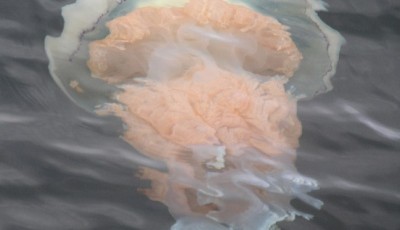Record numbers of jellyfish spotted off south coast
This year is set to break the record for the most sightings of jellyfish across the UK, conservationists say, with the giant barrel jellyfish also appearing in record numbers.
Barrel jellyfish: Reported throughout the year all around the UK, but most 2015 reports from South and SW England.
The Portuguese man o’ war, one of the deadliest jellyfish in the world, was also found washed up in Devon and Cornwall beaches last month causing alarm that there could be more on the way as the warm waters and strong winds tend to encourage these stingers to drift west.
The society began its Jellyfish Survey in 2003 with most of the work being done by public through reports of their jellyfish sightings or encounters through MCS website.
Last year, the number of reports increased to over 1,400 and by July this year the survey had already received over 1,000 reports. Alongside the increased acidification of oceans, there is an increase in jellyfish around the UK and if this isn’t a coincidence, then there could be a major reason behind this that needs to be found.
“The million dollar question is why this is happening?” said Dr Peter Richardson, biodiversity and fisheries programme manager. “At the moment we just don’t know”, added Dr Peter Richardson.
The barrel jellyfish normally make up 10 per cent of the charity’s annual recorded sightings but last year they accounted for 40 per cent.
The society has called for more research into why the numbers are rising, as experts are now at a loss as to what is behind the phenomenon.
Moon jellyfish blooms forced the shutdown of Torness nuclear power station in 2011 when they clogged up the cooling system, leading the industry to invest in mechanisms to detect jellyfish increases near power plants. In the UK large blooms of mauve stinger jellyfish have wiped out salmon stocks in fish farms, while the same species regularly closes down bathing beaches in the Mediterranean due the animal’s painful sting. 75% of records this year have involved barrel jellyfish.
Richarson said that that the government should commission dedicated research and monitoring so as to find answers about what is happening with the number of jellyfish, why this is happening and what will be its implications on the seas.
– Blue jellyfish: Started to appear in May and by July were reported all around the UK.
Lion’s mane: Started to appear in May, by July were reported all around Scotland, Northern Ireland and Wales.









